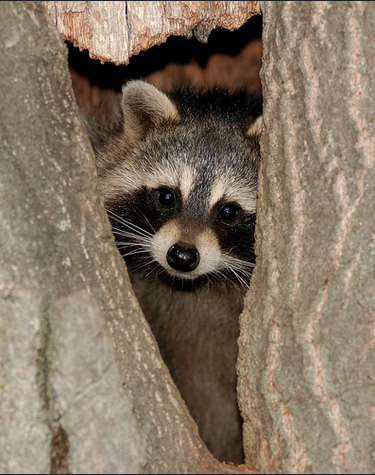Official State Furbearer Animal of Oklahoma
Oklahoma designated the raccoon as the official state fur-bearing animal in 1989. Oklahoma has adopted three other mammal symbols; an official state animal in 1972, a game animal in 1990, and a flying mammal in 2006. All State Mammals
Raccoon Facts
The common raccoon (Procyon lotor) is a mammal native to the Americas. The name "raccoon" is derived from the Algonquian Native American word "aroughcoune," which means "he who scratches with his hands." Raccoons range over the entire lower continent except for the Rockies and desert southwest.
Raccoons were hunted aggressively in earlier times, mostly for their water-repellent fur. In the days of Davy Crockett & Daniel Boone, the coonskin cap was a common clothing item. So many raccoons were killed that a tax was imposed to prevent their extinction in the 1800's. It was estimated that more than a million raccoons were killed each year for their fur. The raccoon population suffered greatly, but this intelligent, resourceful animal has made a remarkable comeback.
The raccoon is as comfortable in urban areas as in the deep woods. In the wild raccoons live in caves, tree hollows and ground burrows. In urban areas they are found in attics, chimney flues, culverts under roadways, or wherever they can find a safe, dry and reasonably comfortable niche. The raccoon is omnivorous and will eat just about anything including insects, frogs, fish, birds, small mammals and the leftovers discarded in your trash can! They have the reputation of "washing" their food, though it's not certain that this act is meant to clean the food as they have been observed performing these washing motions even when water is not available.
Mating occurs in late winter. A litter of 4-5 kits are born in April or May. The males take no part in raising the young and the female will chase him from the den area if need be. The kits remain with the mother until the next summer. In severe winter climates, the raccoon will become dormant, but they do not hibernate.

